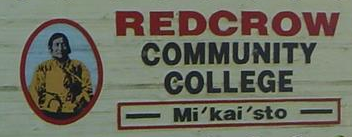Pakksíni’simaan – Ribes oxyacanthoides L. (Punctured Berries, Bursting Berries)
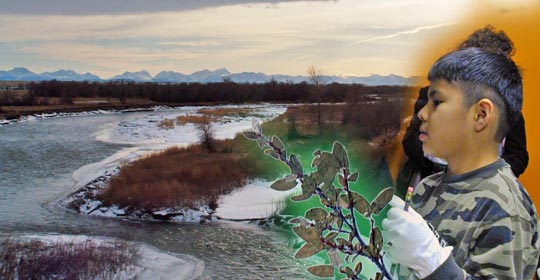
Gooseberries are one of the first berries to produce in the spring and is usually found near riverbanks. Bryce at the Glenbow Museum Exhibit.
(Glenbow Museum. (2005). Nitsitapiisinni Exhibit.
Calgary, Alberta: Blackfoot Gallery Committee.)
“In the spring at the first thunder, the medicine men and all the people prayed –“ Listen Sun! Listen Thunder! Listen Old Man! All Above Animals and Above People, listen! Pity Us! Let us not starve. Give us rain during the summer. Make the berries large and sweet. Cover the bushes with them. Look down on us all and pity us. Let us love.”
Brown, Annora. (1954) Old Man’s Garden. Vancouver, British Columbia. Evergreen Press Limited. (p. 245)
Pakksíni’simaan
Pakksíni’simaaniiyiipistsi iikaikottskiisaissksiimokoyaw ki ikaiksisakoyi omi miistsis. Mo Iisamssootamstaa iikawakapistsiskitsiiyawki aisaissksiimokoiksiksinattsiiyaw. Iitaisaisskiiyaw pakksíni’simaan otsitaotsikahkohpi. Iikayahsiiyaw pakksíni’simaanistsi i’kamikakanistsowato’kia tsahtao ikkamohtokoopskao’kia. Ihtaisaipioohsatsoohso’p, ihtaotoitsikato’p kotookinnoonistsi ki matohpaissiskinawatso’piaw.
Gooseberry
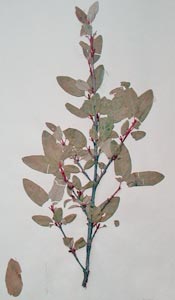
Ribes oxyacanthoides L.
Galileo Educational Network
Gooseberry bushes have prickly branches and bright green leaves. The edges of the leaves are jagged, and can have 3-7 rounded segments, but the base of the leaf is heart-shaped, and they look sort of like maple leaves. The shrub blooms in June with lots of greenish white to cream coloured flowers close together. The round, reddish brown gooseberries turn a blackish color when they are ripe, and are 4-10 mm in diameter. Gooseberry bushes grow in wet places such as swamps, damp woods and moist run-off areas. Sometimes they are found on river banks. They can be found in ravines and at the edge of poplar groves and scrub.
Gooseberries are good for eating when they are ripe, either fresh, boiled with sugar or added to soup. They also work as a mild laxative. The plant has some other uses; for example, if the roots are boiled they can be used for kidney problems or women can use them for uterine troubles. An extract can be made to wash your hair and body.
Groseillier
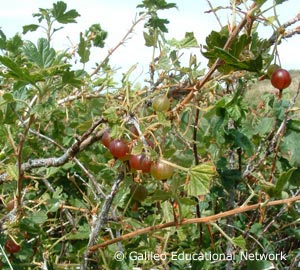
Ribes oxyacanthoides L.
Galileo Educational Network
Les branches des groseilliers sont piquantes et ses feuilles sont d’un vert vif. Ses feuilles sont dentelées, bien qu’elles puissent avoir de trois à sept segments arrondis. La base de la feuille est en forme de coeur, ce qui fait qu’elle ressemble un peu à une feuille d’érable. Ces arbustes fleurissent en juin et leurs fleurs sont rapprochées les unes des autres. La couleur des fleurs varie de blanc verdâtre à crème. Les groseilles rondes d’un brun rougeâtre deviennent noires en mûrissant. Elles mesurent de 4 à 10 millimètres de diamètre. Les groseilliers poussent dans des lieux humides comme les marécages, les forêts humides et là où dévalent les eaux de ruissellement. Nous les trouvons aussi parfois près des berges, dans les ravins et en lisière des bosquets de peupliers et de brouissailles.
Les groseilles sont bonnes à manger quand elles sont mûres, qu’elles soient fraîches ou bouillies avec du sucre ou ajoutées aux soupes. Elles servent aussi de laxatif doux. Cette plante a aussi d’autres usages. Par exemple, ses racines bouillies peuvent aider à soulager les problèmes de reins. Les femmes peuvent aussi s’en servir pour les problèmes utérins. L’extrait de groseillier peut aussi permettre de laver les cheveux et le corps.
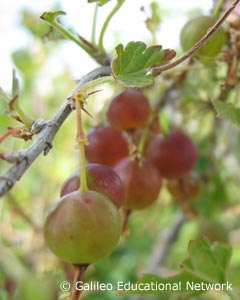
Ribes oxyacanthoides L.
Galileo Educational Network
- Brown, Annora. (1954). Old Man’s Garden. Vancouver, British Columbia: Evergreen Press Limited.
- Hellson, John C. (1974). Ethnobotany of the Blackfoot Indians. Ottawa: National Museums of Canada.
- Johnston, Alex. (1987). Plants and the Blackfoot. Lethbridge, Alberta: Lethbridge Historical Society.
- Kerik, Joan. (1979). Living With The Land: Use of Plants by the Native People Of Alberta. Edmonton, Alberta: Provincial Museum of Alberta.
- Moerman, Daniel E. (1998). Native American Ethnobotany. Portland: Timber Press.
- Tilford, Gregory. (1997). Edible and Medicinal Plants Of The West. Missoula, Montana: Mountain Press Publishing Company.
- Vance, F.R., Jowsley, J.R. & Mclean, J.S. (1984). Wildflowers Across The Prairies. Saskatoon, Saskatchewan: Western Producer Prairie Books.



